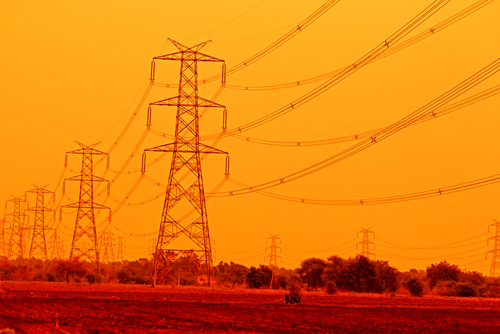Thermal Power Generation: a drain on India’s resources
Electricity consumption in India is currently less than a quarter of the world average, but that figure is expected to grow sharply over coming years given the subcontinent is not only the fastest growing large economy in the world but is also projected to be the most populous by 2022 (a mere five years from now); and India’s rapidly expanding population is also becoming increasingly urbanised, which will accelerate the pace of demand for power generation still further.
And all of this will also have a critical if widely underappreciated, impact on another of India’s equally precious resources: water.
Thermal Power Generation on the subcontinent is currently consuming India’s already scarce water resources at an alarming rate, and this voracious appetite for water is projected to rise by something between 4% - 6% each year between 2015 and 2050 according to the Council on Energy, Environment and Water (CCEW). This upwards trend will create potentially catastrophic stress levels on existing water supplies and associated infrastructure across the country, as if those pressures were not bad enough already as graphically illustrated by this summer’s droughts in Mysore and the coastal areas of Karnataka, Kerala and Tamil Nadu.
So what is Prime Minister Modi’s Government doing about it?
Well, at a prosaic level, the first thing to understand is the technology involved: there are two principal types of cooling technologies currently in use across India’s thermal power plants, so-called “once-through cooling” (or OTC) and Cooling Tower Installation (CT); although there is a third type, dry cooling, which eliminates the need for water withdrawals altogether, this has proved extremely costly in practice in addition to which it radically decreases plant efficiency, so is not presently regarded by the sector as a viable alternative either to OTC or CT technologies.
The Ministry of Environment and Climate Change announced in 2015 that all new thermal power plants on the subcontinent would adopt CT technology and all existing plants will convert to CT technology by July 2020 at the latest which will lead to a gradual phasing out of OTC technology within the next three years.
That Policy will certainly have a positive and significant impact on overall water usage in the short term: if only because OTC technology is so much more water hungry than its CT counterpart, but the CCEW Report ominously concludes that sooner or later thermal power plants will become a “challenging” factor in an evolving pattern of increasing domestic water scarcity because the hard reality is that CT will always be a heavy net consumer of water even if its appetite is less than OTC. Characterising the environmental consequences of a potentially catastrophic water shortage as “challenging’ might, indeed, be read as something of an understatement in those circumstances.
So what else can be done?
Well here’s the good news: India is now the leading player internationally in emission mitigation policies (particularly after President Trump’s decision to withdraw the United States from the Paris Climate Accords) and these policies (especially when set in the context of political imperatives on the subcontinent) have been framed not only in terms of sustainable development, but also to accommodate critical issues of energy access and in particular access for India’s rural poor; all of which inevitably comes down to the key question of Energy Mix. According to the CCEW Report, solar energy will form an increasingly larger part of that crucial mix in India, such that by 2050 62% of electricity generation will be solar based. And CCEW’s reasons for reaching that conclusion are not only that solar energy, but renewable energy as well will be so much cheaper to produce than thermal power (particularly in India with its advantageous geographic conditions), and they are also so much more accessible for the wider population than their fossil fuel brother.
And unlike thermal based power generation, alternative power consumes no water at all.
As TS Eliot might (almost) have put it, “you have the scene, the answer will seem to suggest itself.”
Red Ribbon Asset Management is at the cutting edge of innovative Mainstream Impact Investment strategies which look to this delicate and evolving balance between business, the community and the wider environment when setting its successful investment strategies; a business that responds effectively to its community stakeholders and the environment so as to get that balance right will be much more likely to succeed in the long term. And that’s not only good for business; it’s good for investors and it's good for the environment as well.
Read about the Council on Energy, Environment and Water Report here: ceew.in/
Read about the Ministry for Environment and Climate Change Notice of 2015 here: envfor.nic.in/
Read about Mainstream Impact Investment Strategies here: http://www.redribbon.gi



-1-2-1.jpg?width=150&height=150&name=shutterstock_625218998-350x350%20(1)-1-2-1.jpg)

Leave a Reply